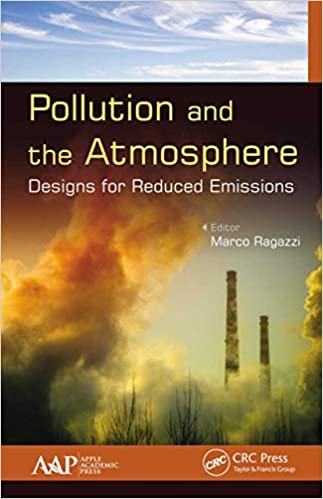
This new compendium volume examines the significant impact of air quality on human health. Assessing air pollution in complex morphologies has become an important issue in order to implement mitigation measures and limit emissions from the most relevant sources, such as waste incineration, traffic emissions, emissions from fuel and electricity production, and household emissions. These pollutants result in adverse health effects, material damage, damage to ecosystems, and global climate change. The book looks at these issues and is divided into several sections, covering air pollution and where we came from and where we’re headed
The chapters in Pollution and the Atmosphere: Designs for Reduced Emissions contain recent research looking at the two major components of air pollution: air pollution control and air-quality engineering. Air pollution control focuses on the fundamentals of air pollutant formation in process technologies and the identification of options for mitigating or preventing air pollutant emissions. Air quality engineering deals with large-scale, multi-source control strategies, with focus on the physics and chemistry of pollutant interactions in the atmosphere.
Dit nieuwe compendium behandelt de belangrijke gevolgen van de luchtkwaliteit voor de menselijke gezondheid. Het beoordelen van luchtverontreiniging in complexe morfologieën is een belangrijke aangelegenheid geworden om mitigerende maatregelen te implementeren en emissies van de meest relevante bronnen te beperken, zoals afvalverbranding, verkeersemissies, emissies van brandstof- en elektriciteitsproductie, en huishoudelijke emissies. Deze verontreinigende stoffen resulteren in schadelijke gezondheidseffecten, materiële schade, schade aan ecosystemen en wereldwijde klimaatverandering. Het boek gaat in op deze kwesties en is verdeeld in verschillende hoofdstukken, waarin wordt ingegaan op luchtverontreiniging, waar we vandaan komen en waar we naar toe gaan
De hoofdstukken in Pollution and the Atmosphere: Designs for Reduced Emissions bevatten recent onderzoek naar de twee belangrijkste componenten van luchtverontreiniging: luchtverontreinigingsbeheersing en luchtkwaliteitstechniek. Bij de beheersing van luchtverontreiniging ligt de nadruk op de grondbeginselen van de vorming van luchtverontreinigende stoffen in procestechnologieën en de identificatie van mogelijkheden om de uitstoot van luchtverontreinigende stoffen te beperken of te voorkomen. Luchtkwaliteitstechniek houdt zich bezig met grootschalige controlestrategieën met meerdere bronnen, waarbij de nadruk ligt op de fysica en chemie van de wisselwerking tussen verontreinigende stoffen in de atmosfeer.
Geef een reactie
Je moet ingelogd zijn op om een reactie te plaatsen.